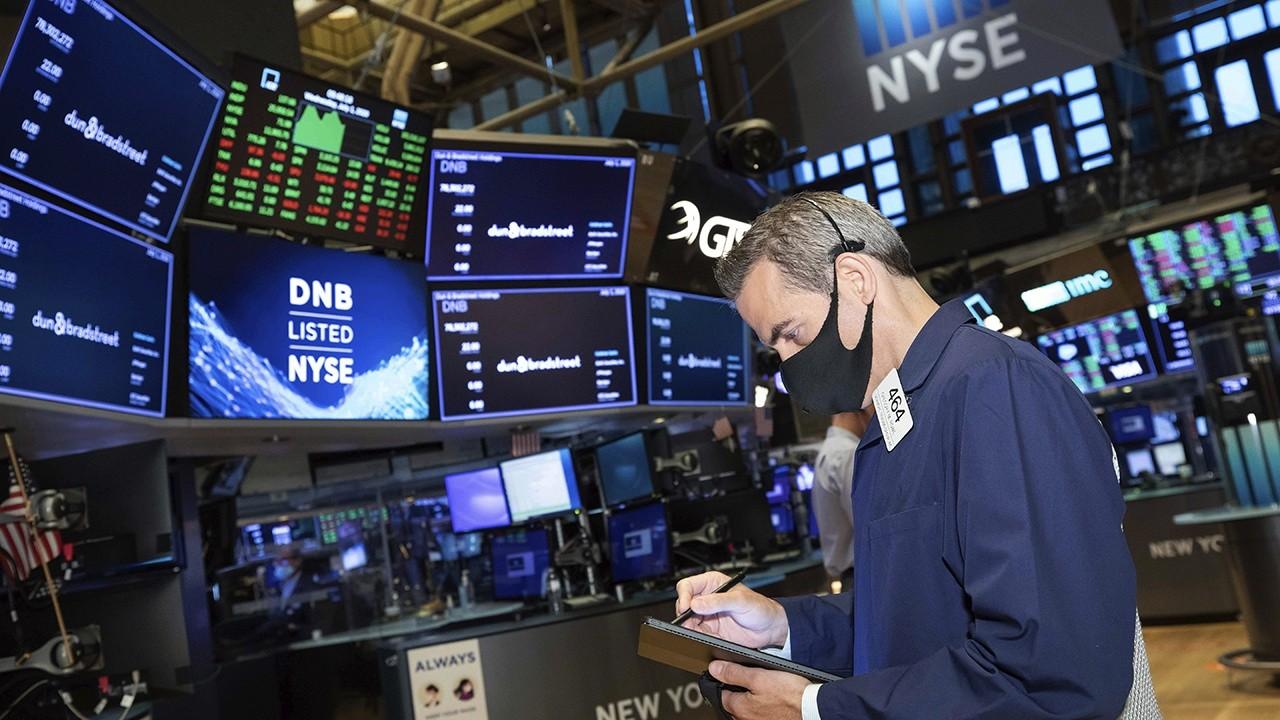ETFs with less transparency face slow rollout
New fund type combines features of mutual funds and traditional exchange-traded funds
Asset managers are rushing to launch a new breed of stock-picking exchange-traded fund, only to find that some of the biggest brokerages in the U.S. aren't yet willing to pitch them to clients.
Fidelity Investments, T. Rowe Price Group Inc. and Invesco Ltd. are among the firms that have recently introduced semitransparent active ETFs, which combine features of mutual funds and traditional ETFs. The funds, which currently focus on U.S. stocks, are cheaper alternatives to mutual funds and give portfolio managers the chance to try to beat the market without running the risk of being copied or front-run. But they don't disclose their daily holdings the way other ETFs do.
The funds have received a chilly reception so far from Bank of America Corp., UBS Group AG and Wells Fargo & Co., which haven't yet offered them to their wealth-management clients. Some bank executives say the strategy requires further scrutiny and a study of the funds' long-term performance.
ETFS VS MUTUAL FUNDS: WHAT'S THE BETTER INVESTMENT FOR YOU?
That has left the initial wave of fund launches cut off from a crucial source of support: BofA, UBS and Wells together manage more than $6 trillion in assets through their wealth-management divisions.
"It's a process and a lot of work. We just don't want to offer a lot of new products," said Sandy Bolton, head of managed investments of Bank of America's investment solutions group, of the approval process. "In this case, it's in the best interest of clients."
ETFs are baskets of securities that trade on an exchange, much like any stock, and have surged in popularity alongside investors' interest in index investing. The U.S. industry has swelled to more than 2,000 funds, with over $5 trillion in assets. Investors have overwhelmingly flocked to the funds at the expense of pricey mutual funds that try to beat the market.
Some traditional asset managers recognized the benefits of the ETFs, namely their lower fees, and embraced the opportunity to put their own spin on the ETF revolution. In 2019, regulators started approving the first semitransparent products, which shield some of their holdings from the public's eye for a month or as long as a quarter, and asset managers began rolling out the ETFs last year.
$7,000 INVESTED IN THIS ETF COULD SEND YOUR KIDS TO COLLEGE
American Century Investments was first in March, followed by Fidelity, T. Rowe Price, Invesco, Natixis and ClearBridge. In all, the firms launched 19 semitransparent ETFs in 2020, according to Morningstar Direct. Fidelity and Gabelli Funds launched others this year, while others, like Goldman Sachs Asset Management, say they are preparing to bring more to market.
The banks, for their part, aren't entirely bearish on the funds. Instead, executives say they have spent the past several months analyzing the added features that accompany the ETFs and expect to approve some as soon as the second quarter.
One point due-diligence teams have been examining is how well the funds trade by monitoring spreads between the price to buy and sell shares. The bigger the spread, the more expensive it is for an investor to trade that product. Some financial executives initially worried that spreads would widen due to the limited information on holdings, making the products unsuitable for their clients.
So far, most of these ETFs appear to be passing the test. Of the 19 ETFs launched last year, about two-thirds had spreads that were at or below the midpoints for their asset categories, according to FactSet data measured over a recent 45-day stretch.
"We want to make sure we're thinking about every element we should be thinking about, make sure advisers understand the product, the mechanics of it," said Greg Trinks, head of Americas fund investment solutions at UBS Global Wealth Management.
UBS said it has an eye toward approving some semitransparent products in the future. Bank of America, meanwhile, expects to take various semitransparent funds to the bank's product approval committee sometime in the second quarter, Ms. Bolton said. Both banks already offer a variety of transparent active ETFs to clients.
GET FOX BUSINESS ON THE GO BY CLICKING HERE
A Wells Fargo spokeswoman declined to comment beyond saying the firm currently doesn't offer any semitransparent ETFs.
"It's a little like the early days of the ETF industry," said Anna Paglia, head of Invesco's ETFs and indexed strategies. "You will have to spend a lot of time and resources educating the market and ecosystem on what these are and what value they can bring to investors."
One approach asset managers have taken to ease the approval process and attract assets has been to roll out ETFs that basically mimic the strategies of some of their most popular, long-running mutual-fund offerings. Most of those also feature some or all of the same portfolio managers.
Fidelity, for example, earlier this month launched an ETF version of its once widely popular Magellan mutual fund. It also rolled out ETFs largely similar to its Blue Chip Growth and Value funds last year. T. Rowe did the same by launching ETF versions of mutual funds like T. Rowe Growth Stock and T. Rowe Price Equity Income.
CLICK HERE TO READ MORE ON FOX BUSINESS
"We chose these...in part because they are well-known flagship products that would resonate with advisers," said Tim Coyne, head of exchange-traded funds at T. Rowe.
Whether those offshoots end up cannibalizing their mutual-fund counterparts remains to be seen. For now, asset managers say ETF investors represent a new type of client who typically overlooked mutual funds. Several investor surveys have shown that ETF investors tend to be younger than mutual-fund investors.
"For Fidelity, ETF users are a new client base," said Greg Friedman, head of ETF management and strategy at Fidelity.




















